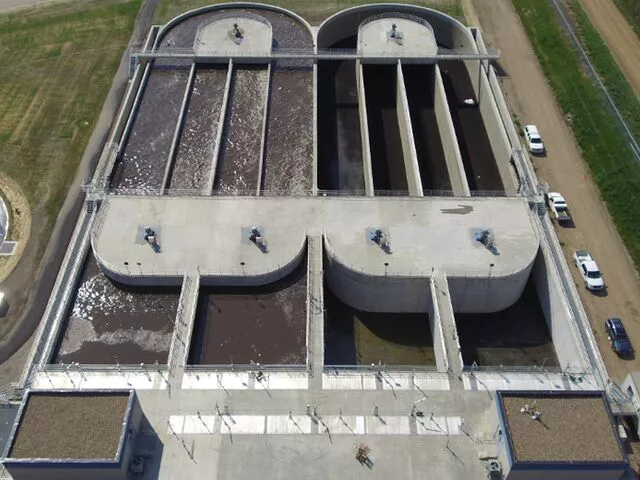PFOA and PFOS
Understanding PFOA and PFOS: The Environmental Challenges and Solutions in 2025
Introduction
Perfluoroalkyl substances (PFAS), particularly perfluorooctanoic acid (PFOA) and perfluorooctanesulfonic acid (PFOS), have become focal points in environmental health discussions due to their persistence in the environment and potential health impacts. As of July 30, 2025, ongoing public scrutiny, regulatory changes, and advancements in remediation technologies make it imperative for environmental professionals, municipal leaders, and the general public to understand the comprehensive implications of these compounds. The presence of PFOA and PFOS in drinking water has emerged as a critical concern, while the effects of these chemicals are still unfolding.
The objective of this article is to provide an in-depth analysis of PFOA and PFOS, examine the regulatory landscape in 2025, outline their effects on health and the environment, and explore current solutions for mitigation in water treatment.
Understanding PFOA and PFOS: Their Composition and Uses
What Are PFOA and PFOS?
PFOA and PFOS are part of a broader class of chemicals known as perfluoroalkyl substances (PFAS). These fluorinated compounds are characterized by a fully fluorinated carbon chain, making them exceptionally resistant to degradation. PFOA is primarily used to make fluoropolymers, while PFOS has been commonly used in stain-resistant fabrics, firefighting foams, and various other applications.
- PFOA: A carboxylic acid with eight carbon atoms, it is widely recognized for its role in the manufacturing of Teflon and other non-stick coatings.
- PFOS: A sulfonic acid with similar properties, PFOS has notable applications in stain repellents and firefighting foams.
According to industry analysis from 2024, PFOA and PFOS are among the most widely studied PFAS due to their environmental and health implications.
Current Regulatory Landscape
Federal and State Regulations in 2025
In 2025, regulatory frameworks specifically targeting PFOA and PFOS have become more stringent. The Environmental Protection Agency (EPA) has made significant strides in clarifying permissible limits for PFAS in drinking water.
-
EPA Guidelines: The EPA’s 2025 risk assessment has established an advisory level of 0.004 ng/L for PFOA and 0.005 ng/L for PFOS in drinking water, recognizing the severe health risks even at minuscule concentrations.
-
State-Level Actions: Many states have taken proactive measures, establishing tighter regulations. For instance, California and New Jersey have adopted maximum contaminant levels (MCLs) significantly lower than federal standards, reflecting local health concerns and legal actions against manufacturers.
International Perspectives
Globally, nations are waking up to the implications of PFAS, with the EU considering measures to ban non-essential uses of PFOS entirely. Alignment across nations is crucial in creating a unified front in minimizing PFAS contamination.
Health and Environmental Impacts
Health Risks Associated with PFOA and PFOS
Research has increasingly linked PFOA and PFOS exposure to various health effects. According to the 2024 National Toxicology Program findings, potential health risks include:
- Cancer Risks: Considerable evidence points to an increased risk of kidney and testicular cancers.
- Immune System Effects: PFAS exposure can result in reduced vaccine efficacy and increased risk of infectious diseases in children.
- Developmental Concerns: Pregnant women exposed to PFAS may risk adverse developmental outcomes in their offspring.
Environmental Persistence
The Environmental Protection Agency identifies PFAS as environmental pollutants of concern due to their longevity and bioaccumulation. Recent studies have shown persistent levels of PFOA and PFOS in soil, water bodies, and wildlife, causing significant ecological imbalance. The bioaccumulation in food chains has raised alarms concerning food safety, particularly for freshwater fish.
Monitoring and Detection
Emerging Technologies in Detection
Advancements in detection technologies have enhanced the ability of water treatment facilities and environmental agencies to quantify PFAS concentrations in various mediums.
- Liquid Chromatography-tandem Mass Spectrometry (LC-MS/MS): This technology allows for lower detection limits and more accurate quantification of PFOA and PFOS.
- Portable Spectroscopic Devices: Increasingly, municipalities are investing in portable detection units to monitor drinking water in real time.
Importance of Continuous Monitoring
In light of recent regulatory updates, continuous monitoring has become indispensable. The drinking water testing network supported by the EPA focuses on identifying sources of contamination and directing remediation efforts.
Mitigation and Treatment Solutions
Traditional Water Treatment Challenges
Conventional water treatment methods, including coagulation and sedimentation, have shown limited effectiveness in removing PFOA and PFOS. The resistance of these compounds to standard treatment practices necessitates innovative solutions.
Advanced Remediation Technologies
-
Activated Carbon Filtration:
- Effective in removing PFAS using granular activated carbon (GAC).
- Regular replacement and testing are recommended since carbon can become saturated.
-
Ion Exchange Resins:
- Specialized ion exchange resins designed for PFAS removal have emerged as robust alternatives.
- They selectively absorb PFAS compounds from water, minimizing leakage of contaminants.
-
Reverse Osmosis (RO):
- Reverse osmosis can effectively remove PFAS from drinking water.
- However, it requires significant energy input and produces waste concentrate that must be managed.
-
Innovative Biological Treatments:
- Research is ongoing to develop bioremediation strategies, using microbes engineered to break down PFAS.
Community Engagement and Public Health Initiatives
Municipalities are increasingly employing community outreach programs. Engaging with residents through education about PFAS pollution, encouraging involvement in monitoring, and facilitating transparency regarding water testing results are vital approaches to public health advocacy.
Conclusion
As of July 30, 2025, the understanding of PFOA and PFOS continues to evolve, necessitating informed actions from regulators, engineers, and communities. With growing evidence of health risks linked to these substances and tightening regulatory frameworks, it is paramount for stakeholders to actively pursue advanced treatment solutions and effective monitoring strategies. Engaging the public in discussions and developing community-specific solutions will enhance protection measures against PFAS contamination, safeguarding both ecological integrity and public health.
In navigating these challenges, the collaboration between scientific research, regulatory bodies, and engineering innovation is essential for promoting a sustainable and health-conscious future.



